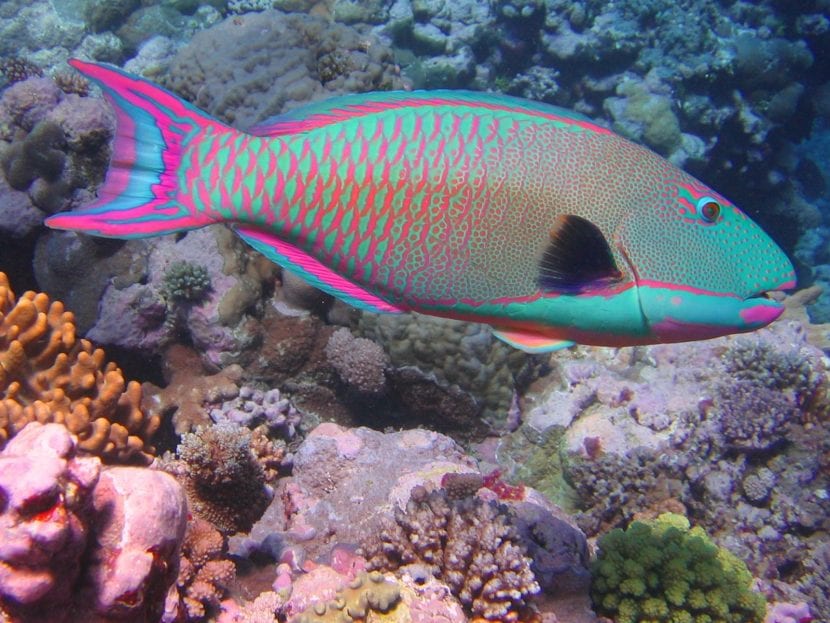
The nature do not stop surprising. It is only enough for us to enter the various types of wild ecosystems that are included in it, to be able to witness unique phenomena, places and creatures. This circumstance takes on a greater dimension if we move to seas and oceans. There are numerous animal appointments that seem to have come out of a science fiction movie or the best of imaginations. A clear example of this that I tell you is one of the most striking fish that exist, the Parrotfish.
This parrot fish stands out for many things. But, without a doubt, what is most striking about them is their enormous coloring and their unique physical appearance. You may have heard of parrotfish numerous times, or you may not. That is why we dedicate this article to you so that you better know this being in all its aspects and know the curiosities and details that surround it.
Habitat
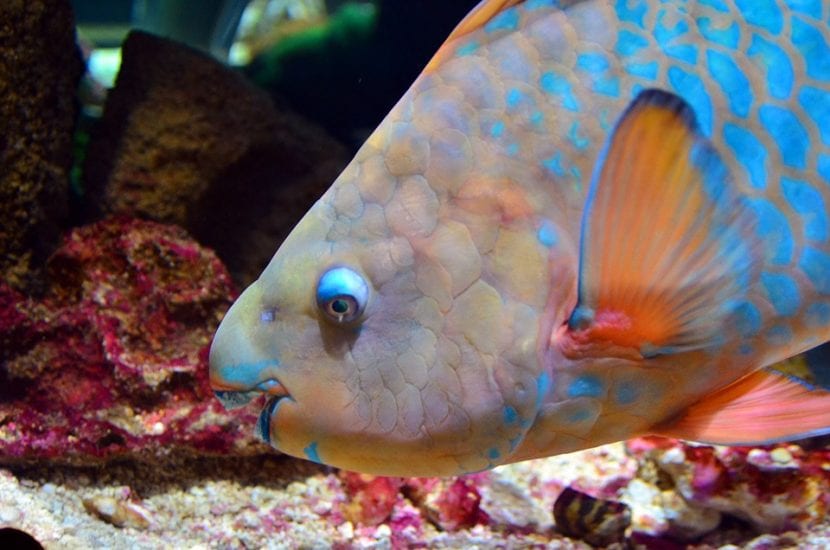
Parrotfish, known in some areas by the name of parrot fish, as most de peces which have similar characteristics to them, have a great predilection for making tropical waters their home. Specifically, they are the waters of the Indian and Pacific oceans where the greatest number of specimens of this species coexist. However, we also find parrotfish in the Atlantic Ocean and the Red Sea.
As is often the case, parrotfish have adapted to life on coral reefs, like many other types. de peces, since there are a greater number of chances of survival than in other places.
Parrotfish characteristics
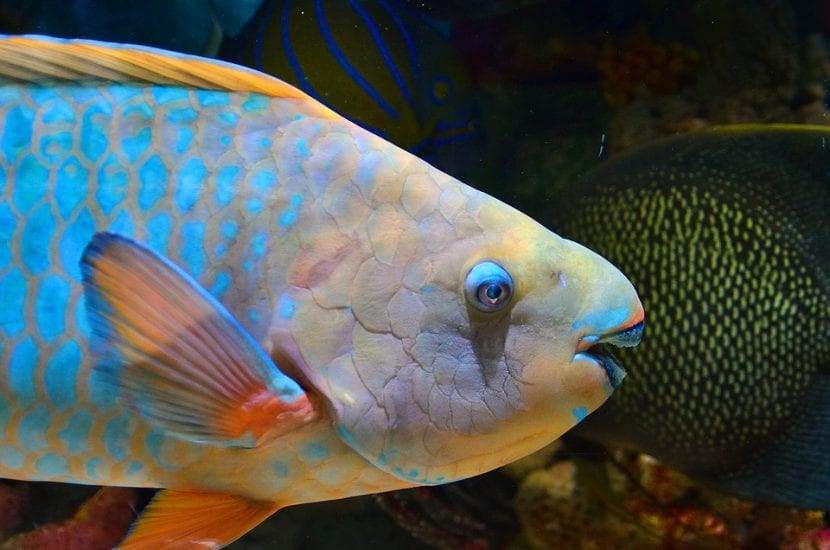
As we mentioned at the beginning, what distinguishes the parrotfish from the rest and makes it stand out are its physical and morphological characteristics. It should be mentioned that parrotfish are not a single species, but rather they are a set of species that have similar traits.
It is estimated that there are up to a total of ninety types de peces parrot, with different sizes, shapes and tones. But as a general rule, they are fish with rather large and elongated bodies, around about 90 centimeters, although there was an occasion when an individual of more than 1,2 meters in length. As for weight, they are around kilograms. There are also varieties of much smaller size, whose length does not exceed 15 centimeters.
The scales that precisely cover their bodies are their great treasure. When they are young, these scales have a light color, and as the animal reaches maturity, its tone changes, it becomes more intense and, what is more, it acquires different colors (blues, purples, greens and pinks are more common). Another hallmark of parrotfish is their powerful teeth, which they use to bite off pieces of coral and break the shells of mollusks.
Ultimately, its various colors and that curved hardened mouth is what has caused this fish to be attributed a certain resemblance to parrots.
Food
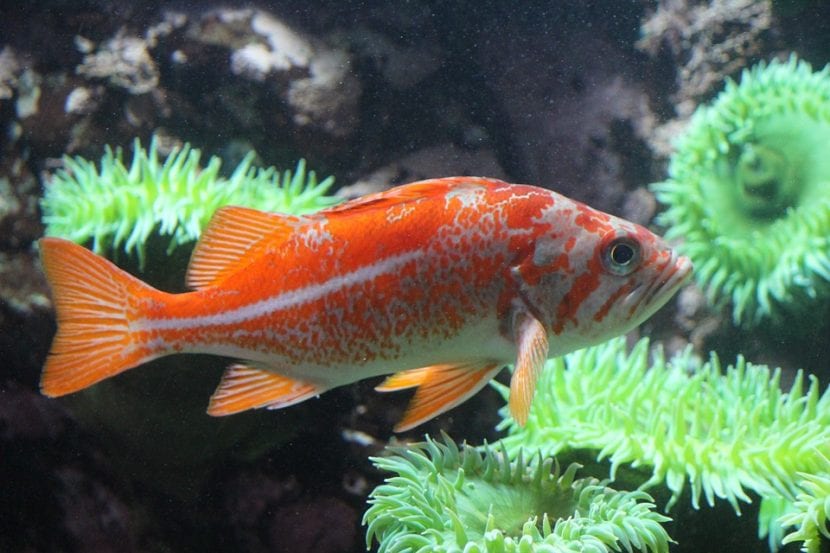
Parrotfish are generally herbivores, and they base their diet on algae that they pluck and collect on coral reefs. Although there are also times when they act as predators, trapping small mollusks and organisms of extremely small sizes.
These fish, when they feed on algae and corals, are capable of crushing and grinding the pieces into very, very small fragments. This results in its waste substances produced after digestion being gritty.. As a curiosity, there are places on the planet where the parrotfish, due to its important nutritional and digestive activity, exceeds the sand production of any other type of natural process. Scientists estimate that there are parrotfish that exceed 100 kilos of sand produced per year, almost nothing!
Reproduction
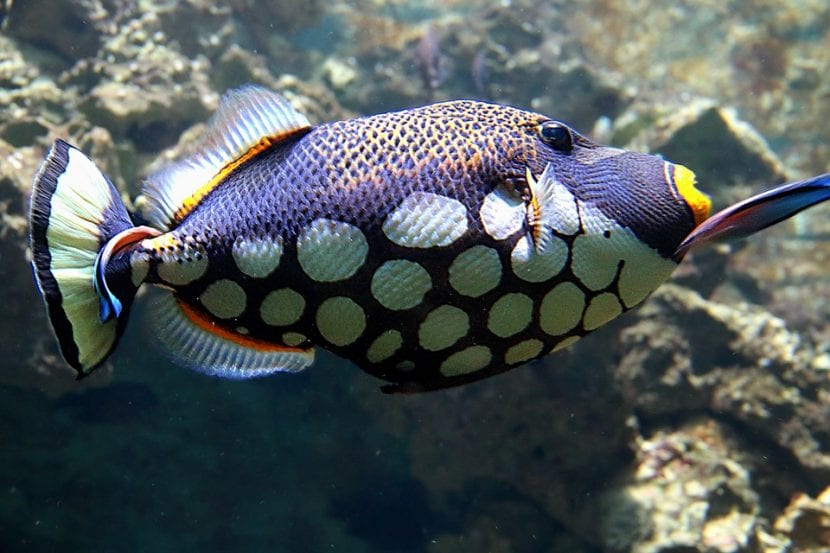
On the subject of reproduction, parrotfish are very special. They are one of the few fish called sequential hermaphrodites. What does this mean? As they grow older they change their sex. At birth, they are female, and in the final phase of their lives they have the sex of a male. Although this is not the prevailing norm in all parrotfish, since there are species that make a change in reverse, or on the contrary, do not change their sex and retain their birth sex.
Females lay large numbers of eggs. They do this, because most of those eggs do not survive, but are instead ingested by other animals while floating in the water. The rest of them, who have had better luck, reach the holes in the coral reefs where they rest until they hatch.
The parrot fish in the aquarium
As with most de peces Tropical, parrot fish are one of the most prized aquarium animals for their color and beauty. However, they are not easy fish to keep, since their relationship with coral reefs is almost symbiotic, which means that they need them to have a good life and enjoy health.